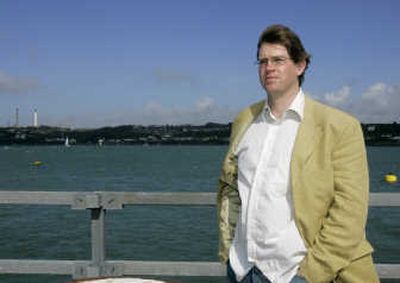Wales sees a green future

MILFORD HAVEN, Wales – Blustery winds threaten to topple Iain Russell off the dock into the narrow stretch of water connecting the Irish Sea and the Atlantic Ocean.
But those gusts are a key reason why his company, Wave Dragon Ltd., plans to anchor the world’s largest wave energy converter several miles out to sea off this small town on the southwestern Welsh coast.
More than a century after the industrial revolution’s coal mines and steel works turned Wales’ lush green valleys into stark black hills, the strong winds that batter its coastline are playing a major part in the local government’s plan to turn the country green again.
By 2025, Wales wants to generate all its electricity from renewable sources and even become a net exporter of power.
Wales is betting that two huge projects – a $30 billion tidal barrage in the Severn Estuary and the largest biomass plant in the world in Port Talbot – will produce most of the electricity needed to reach its 2025 target.
For the rest, the government is hoping that its natural winds, streamlined bureaucracy, access to skilled labor, proximity to universities and state funding will prove enticing to companies in both the renewables and clean technology sectors.
Going green could make or break Wales following the death of the mining industry in the 1980s. While Cardiff has blossomed from a provincial city into a significant capital in recent years under a retail- and services-led boom, rural Wales has limped along on tourism and agriculture.
A parade of companies deciding to make products from cars to cell phone chargers in Wales shows that the strategy is paying off.
Wave Dragon was encouraged to move its headquarters from Denmark to Wales in part by a $10 million grant from the Welsh European Funding Office.
“The funding dried up in Denmark so we started looking elsewhere,” said Russell. “We also discovered how much more wave energy there is here than in the North Sea.”
The company plans to locate its wave energy converter two miles to three miles off the Welsh coast for testing over three to five years. The barge produces electricity directly from the power of the water by first enhancing, then pulling in oncoming waves to turbines in the bottom of the structure.
Russell said that the project could produce enough electricity each year during the testing phase to meet the demands of between 2,500 and 2,000 homes.
The company hopes to eventually sink 10 of the structures 10 miles to 12 miles out to sea to form Britain’s first commercial wave energy farm – but the plan is dependent on nearly $71 million of extra funding Wave Dragon is seeking from private sources.